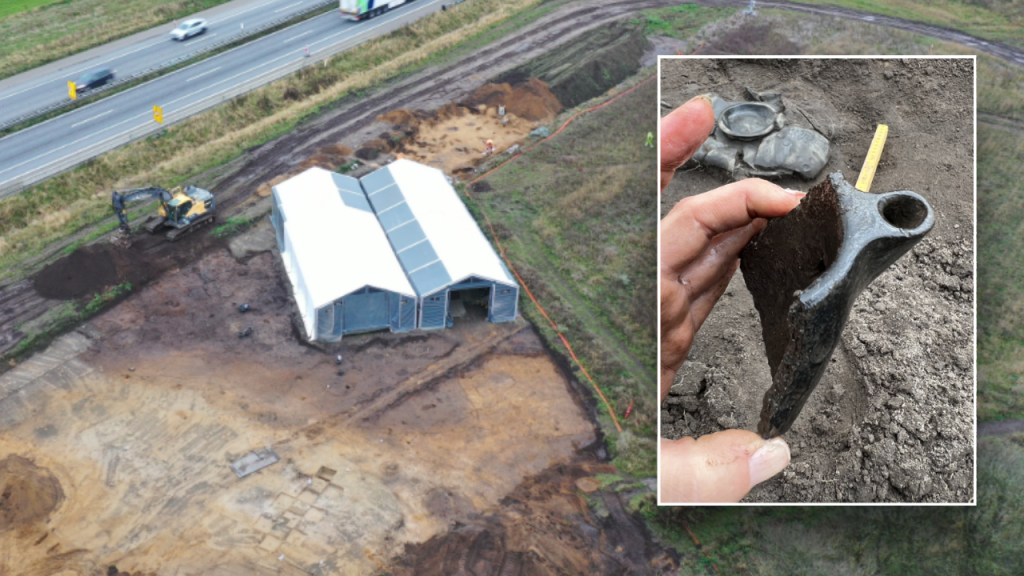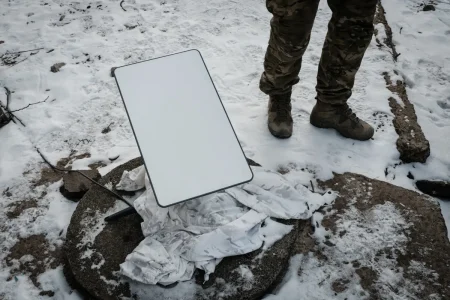The discovery of an ancient Roman helmet in a Danish village has sent ripples of excitement through the archaeological community. Unearthed in the town of Løsning during a fall excavation, the helmet, initially identified as two unusual iron plates, was revealed through X-ray imaging to be the remnants of a Roman crest helmet, a type used in the 4th century. This find marks the first discovery of a Roman helmet in Denmark and is exceptionally rare in southern Scandinavia, where no comparable discoveries exist. The helmet’s presence in Denmark raises intriguing questions about Roman influence and interaction with Germanic tribes in the region during the late Roman Empire. The helmet fragments, consisting of a neck guard and a decorated cheek guard, provide a tangible link to a period of significant cultural exchange and potential conflict.
The Roman helmet, however, was not the only remarkable discovery at the Løsning site. Archaeologists also unearthed a trove of Iron Age weapons and armor, including an exceptionally rare and valuable chainmail shirt. The presence of this high-status armor suggests the burial site’s association with a powerful chieftain. Chainmail production during the Iron Age was a complex and resource-intensive process, making ownership a privilege reserved for the warrior elite. The chainmail shirt, discovered alongside fragments of bronze neck rings, known as “oath rings,” further reinforces the notion of a high-status individual, as these rings symbolized power and influence within Iron Age societies. This discovery represents a unique find, as it marks the first instance of chainmail being found in association with a settlement in southern Scandinavia, rather than in a bog or burial site, suggesting a different context for its deposition.
The manner in which the war equipment was buried points to a ritualistic or ceremonial purpose. Archaeologists believe the items were likely offerings to higher powers, possibly connected to a chieftain’s residence. The careful placement and the inclusion of high-status items like the chainmail shirt suggest a deliberate act with symbolic meaning, rather than the remnants of a workshop, barracks, or battlefield. This ceremonial aspect adds a layer of complexity to the site, hinting at the religious beliefs and practices of the Iron Age community.
The discovery of both Roman and Iron Age artifacts in the same location raises questions about the interaction between the Roman Empire and the Germanic tribes inhabiting Denmark during this period. While the Roman Empire never formally extended its control over Denmark, the presence of Roman artifacts suggests some level of contact, perhaps through trade, diplomacy, or even conflict. The helmet could have been acquired through trade, gifted as a diplomatic gesture, or taken as spoils of war. Further analysis of the artifacts and the surrounding context may shed light on the nature of this interaction.
The excavation at Løsning is ongoing, and further analysis of the recovered materials is expected to provide deeper insights into the significance of these discoveries. Researchers will examine the deposits where the weapons were buried to determine the precise nature of the rituals or ceremonies associated with them. This will involve analyzing soil composition, searching for any accompanying organic materials, and comparing the Løsning site with other known ritual sites from the Iron Age. By studying the spatial distribution of the artifacts and their relationship to the settlement, archaeologists hope to reconstruct the events that led to their deposition.
Determining the origin of the weapons and armor is another key objective of the ongoing research. Were these items crafted locally by skilled artisans, or were they acquired from elsewhere, potentially as spoils of war? Analyzing the materials and construction techniques used in the artifacts will provide clues about their provenance. If the weapons originated from outside the local area, it could indicate contact with other cultures or even participation in military campaigns further afield. The unique combination of Roman and Iron Age artifacts at the Løsning site offers a rare glimpse into a pivotal period of European history, a time of cultural exchange, conflict, and the rise of powerful chiefdoms. The ongoing investigation promises to unveil further secrets about the people who inhabited this region and their complex relationship with the wider world.















